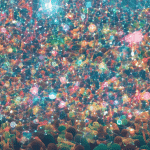As we look to the sky, drones have become the new norm for many recreational activities. Their rising popularity is undeniable, but with increased usage comes the need for more sustainable power options. The solution may lie in tapping into the limitless energy of the sun. With breakthroughs in solar power technology, solar-powered drones are no longer a distant dream but a tangible reality, carrying enormous potential to revolutionize the recreational drone market.
Solar Power: A Clean and Sustainable Source
Harnessing the sun’s power to fuel drones provides not just a clean and sustainable source of energy, but also allows for longer flight times. This is a significant advantage over traditional battery-powered drones, which are often limited by short battery life.
A lire en complément : What Are the Most Effective Anti-Theft Technologies for Drones?
Solar power is derived from the sun’s rays, which contain an abundant amount of energy. These rays can be converted into electricity using photovoltaic cells. When the sun’s rays hit the cells, they knock electrons loose from their atoms. This results in a flow of electricity, which can be used to power electronic devices, including drone.
The recent years have seen substantial advancements in solar power technology. Photovoltaic cells have become increasingly efficient and affordable, making solar power a viable alternative to traditional fuel sources. Moreover, solar power systems are known for their durability and require minimal maintenance, providing an additional advantage.
Avez-vous vu cela : How Is 3D Printing Technology Influencing Drone Design?
Solar-Powered Drones: An Emerging Market
The recreational drone market has witnessed rapid growth over the past few years. As a result, the demand for more sustainable and energy-efficient drones has surged. This has paved the way for solar-powered drones, a niche segment that has shown promising potential.
Solar-powered drones have several advantages over their battery-powered counterparts. They can remain airborne for extended periods without needing to land for battery recharges, making them an attractive option for recreational uses such as photography and racing.
Moreover, the market for solar-powered drones is driven by the increase in environmental awareness among consumers. As people become more conscious about their carbon footprint, they seek out cleaner and more sustainable alternatives. Solar-powered drones fit the bill perfectly, offering an eco-friendly option to drone enthusiasts.
Challenges in Solar-Powered Drone Development
Although solar-powered drones hold immense potential, their development is not without challenges. The most significant hurdle is the weight constraint. Drones need to be lightweight to stay airborne, but solar panels and the associated power systems can add substantial weight to the aircraft.
Efforts are being made to overcome this challenge by developing lightweight solar panels and power systems. Scientists and engineers are exploring materials like thin-film photovoltaic cells, which are much lighter than traditional solar panels. These cells can be integrated into the drone’s body, reducing weight and improving aerodynamic efficiency.
Another challenge is the dependency on sunlight. Solar-powered drones can only fly during the day in bright sunlight. This can limit their utility in areas with less sunshine or during specific seasons. To mitigate this, developers are exploring hybrid power systems that combine solar power with traditional battery power, allowing the drone to switch to battery power when solar power is insufficient.
The Future of Solar-Powered Drones in the Aerospace Industry
Solar-powered drones are not just limited to recreational uses; they also hold vast potential in the aerospace industry. Their ability to stay airborne for extended periods can be harnessed for various applications, ranging from weather monitoring to wildlife tracking and disaster management.
Leading aerospace companies are showing interest in solar-powered drones, with several projects currently in the development stage. These drones are expected to play a significant role in the future of aerospace, providing an eco-friendly and cost-effective alternative to traditional fuel-powered aircraft.
However, the widespread adoption of solar-powered drones in the aerospace industry requires substantial scholar research and development efforts. It also requires a regulatory framework that supports the use of these drones for a variety of applications.
In conclusion, while solar-powered drones face certain challenges, the potential benefits they offer make them an exciting area of development. With further advancements in technology and the right regulatory support, solar-powered drones could very well revolutionize not just the recreational drone market, but the entire aerospace industry.
Technological Innovations Making Solar-Powered Drones Possible
As the demand for more sustainable power sources continues to rise, technological innovations are taking center stage in making solar-powered drones a reality. These innovations are largely centered around enhancing the efficiency of solar panels, reducing their weight, and increasing the energy density of the power systems.
A key advancement in this area is the development of thin-film photovoltaic cells. These cells are significantly lighter than traditional solar panels, making them more suitable for use in drones. Additionally, they are flexible and can be integrated into the body of the drone, reducing drag and improving flight efficiency.
Moreover, the progression in energy storage technology has also contributed to the viability of solar-powered drones. Advances in battery technology have led to the development of more lightweight and energy-dense batteries. This means that the drones can store more energy without significantly increasing the weight of the aircraft.
Research into solar power technology is ongoing, with institutions and businesses worldwide invested in this area. A search on Google Scholar reveals numerous studies and papers dedicated to improving solar power efficiency and energy storage. This underscores the significance of this field and the potential it holds for the future of solar-powered UAVs.
Key Takeaways and the Future of Solar-Powered Drones
Solar-powered drones are set to revolutionize the world of recreational drones and beyond. They offer a sustainable power source, longer flight times, and an eco-friendly alternative to traditional battery-powered drones. Moreover, they have potential applications in a range of fields, including the aerospace industry, weather monitoring, wildlife tracking, and disaster management.
However, the development of solar-powered drones is not without its challenges. The weight of solar panels and power systems remains a significant hurdle, as does the dependency on sunlight. Despite these challenges, continuous advancements in technology are gradually overcoming these obstacles.
The future of solar-powered drones looks promising. As technology continues to advance, we can expect more efficient solar panels, more energy-dense batteries, and more lightweight power systems. This will lead to drones that can stay airborne for longer periods, therefore expanding their possible applications.
The recreational drones market is set for a major disruption as solar-powered drones become more common. And as consumers become more conscious about their environmental impact and carbon emissions, the demand for solar-powered drones is likely to increase.
In conclusion, while the development journey of solar-powered drones is fraught with challenges, the immense potential they hold makes them a fascinating field of study and development. With continuous technological advancements and supportive regulatory frameworks, solar-powered drones may soon become the norm, heralding a new era in the world of unmanned aerial vehicles. This could significantly reduce the carbon footprint associated with recreational drones and potentially revolutionize multiple sectors, including the aerospace industry.











